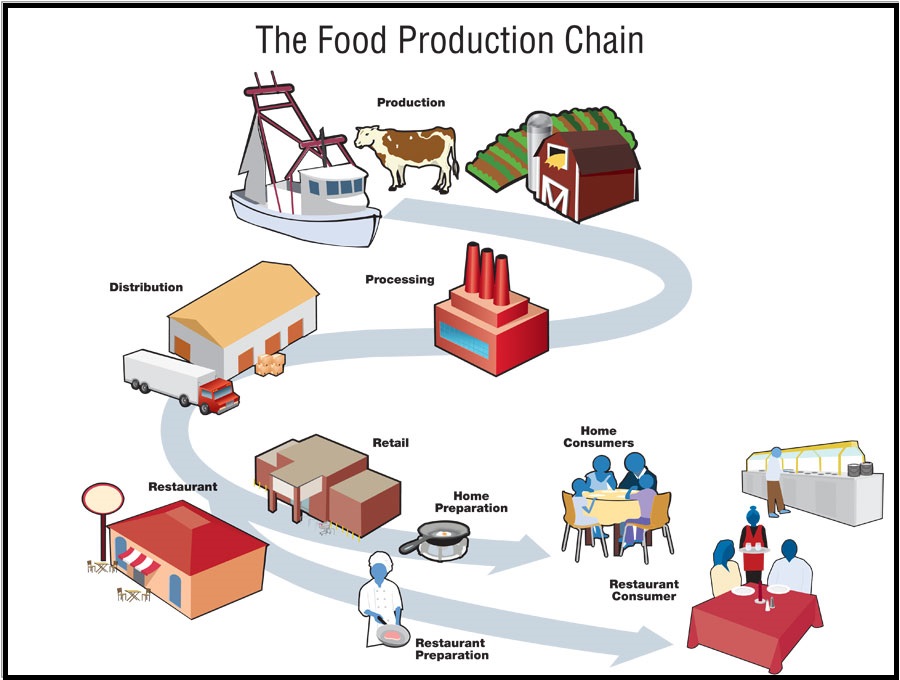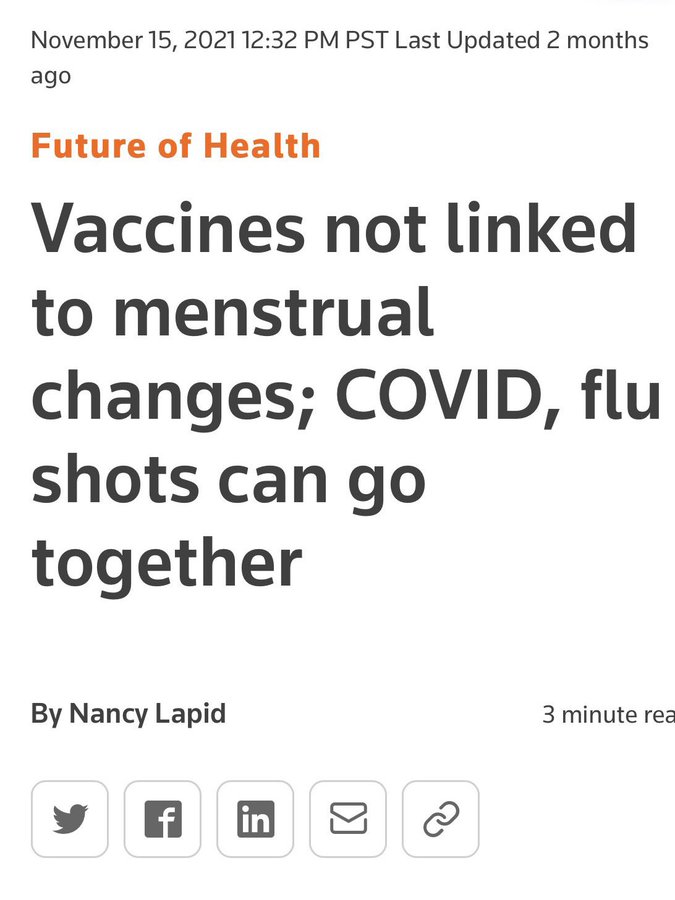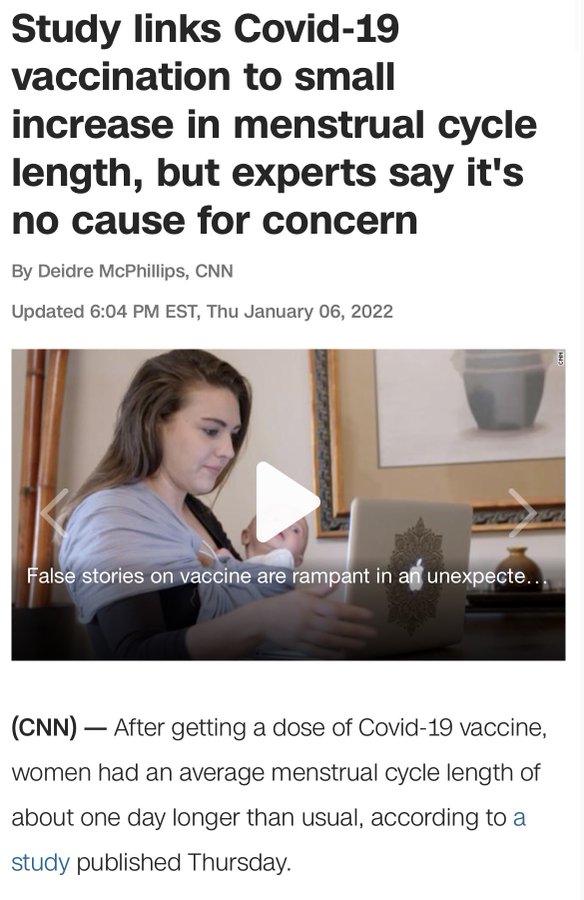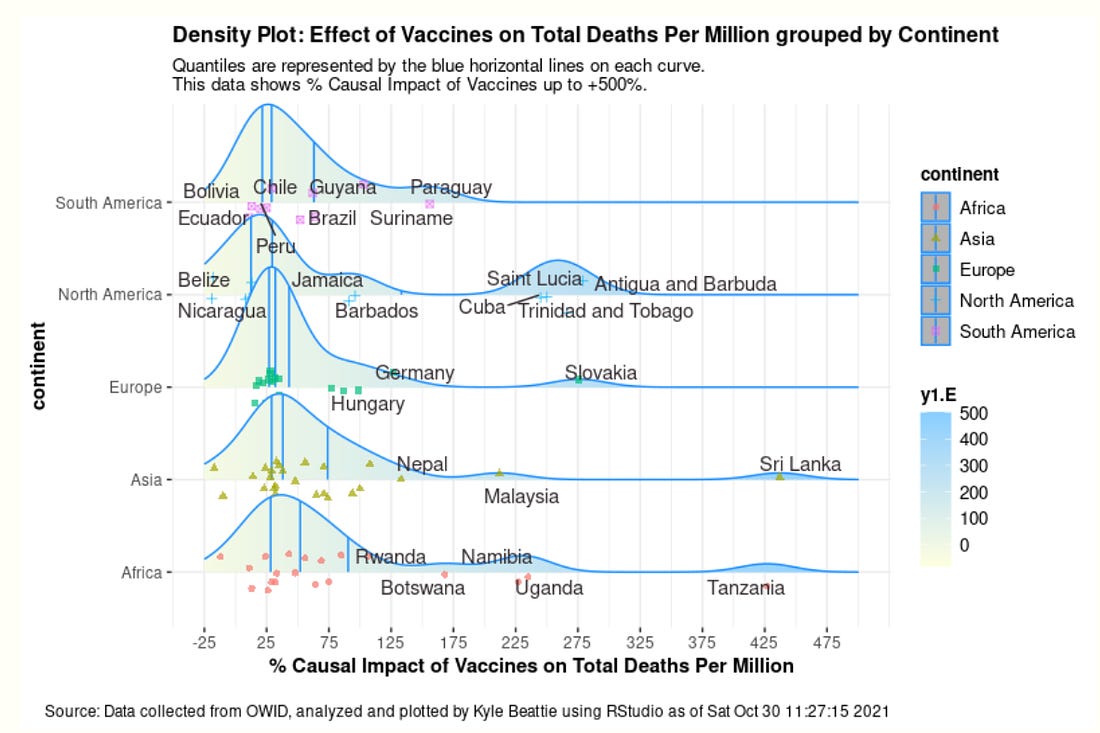Trump Has Everything, Pandemic Countered, Truth Is Mind Blowing, Cannot Fully Be Exposed – Ep. 2673
Watch The X22 Report On Video

The people are now noticing that there are problems with the economy. People are now reporting that there are empty shelves in the supermarkets and this problem is widespread. 68% of the people say the economy is now their main concern. Turkey is now forcing exporters to trade in other currencies for lira. The [DS] has lost the narrative on the pandemic. The pandemic is now coming to an end, this doesn’t mean they won’t continue to push the vaccines and their control. But in the end the people will see the truth. The fake news is already reporting that the people are tuning out and they are no longer listening, they have lost the narrative and they know it. This is an information war and the puppet masters have lost control of it. Trump is ready to take the bull horn and control the flow of information for the next phase. The truth is mind blowing but cannot be fully exposed, the patriots have it all.
Economy
Pittsburgh, two different stores. I’m 38 and have never seen this, except for immediately after Xmas when they clearance everything. These were from early Dec. pic.twitter.com/NCpktIyxcc
— Unmask our kids (@MazzoRay3) January 9, 2022
Ct empty also… pic.twitter.com/Lu8UdelJz5
— it’s me (@arsneddon) January 9, 2022
Harris Teeter in Virginia.#BareShelvesBiden pic.twitter.com/EJdl0UY8iW
— Christy Lewis (@Cavalewis) January 9, 2022
@Safeway in Lahaina, Maui last week pic.twitter.com/HZwDTQ4g3f
— Matt O. Sterba (@MattSterba) January 9, 2022
ShopRite in Clark, New Jersey this evening
(Photo from a friend, reposted with permission) pic.twitter.com/p7XfNPzdxx
— Jon Levine (@LevineJonathan) January 10, 2022
#BareShelvesBiden in dark blue Oakton, Virginia pic.twitter.com/JM4bXL7CDn
— Curtis Houck (@CurtisHouck) January 10, 2022
Temporary Empty Shelves Are Not a Supply Chain Crisis, It Is Important to Understand the Difference
- An empty retail shelf or case for a 24, 36 to 48-hour period is not, I repeat, NOT, part of a systemic supply chain disruption. Those are mostly location and
- Things to look for:
- (1) A shortage of processed potatoes (frozen specifically).
- And/Or a shortage of the ancillary products that are derivates of, or normally include, potatoes.
- (2) A larger than usual footprint of turkey in the supermarket (last line of protein).
- (3) A noticeable increase in the price of citrus products.
- (4) A sparse distribution of foodstuffs that rely on flavorings.
- (5) The absence of non-seasonal products.
- (6) Little to no price difference on the organic comparable (diff supply chain)
- (7) Unusual country of origin for fresh product type.
- (8) Absence of large container products
- (9) Shortage of any ordinary but specific grain derivative item (ex. wheat crackers)
- (10) Big brand shortage.
- (11) Shortage of wet pet foods
- (12) Shortage of complex blended products with multiple ingredients (soups etc)
- (13) A consistent shortage of milk products and/or ancillaries.
- These notes above are all precursors that show significant stress in the supply chain. Once these issues are consistently visible, we are going to descend into food instability very quickly, sector by sector, category by category.
- At first, each retail operation will show varying degrees of the supply chain stress according to their size, purchasing power, and/or private manufacturing, transportation and distribution capacity.
- Here is a snapshot of the food we had in storage at the end of February 2020: over 302 million pounds of frozen butter; 1.36 billion pounds of frozen cheese; 925 million pounds of frozen chicken; over 1 billion pounds of frozen fruit; nearly 2.04 billion pounds of frozen vegetables; 491 million pounds of frozen beef; and nearly 662 million pounds of frozen pork.
- This bulk food storage is how the total U.S. consumer food supply ensures consistent availability even with weather impacts. As a nation, we essentially stay one harvest ahead of demand by storing it and smoothing out any peak/valley shortfalls. There are a total of 175,642 commercial facilities involved in this supply chain across the country
- The stored food supply is the originating resource for food manufacturers who process the ingredients into a variety of branded food products and distribute to your local supermarket. That bulk stored food, and the subsequent supply chain, is entirely separate from the fresh food supply chain used by restaurants, hotels, cafeterias etc.

Source: theconservativetreehouse.com
Economy is now the number one concern
The AP is reporting that 68% of Americans now say the economy overall is their number one concern. Meanwhile the federal reserve of New York is reporting the inflation results from December are likely to be the same, if not higher, than the inflation results in November.
Turkey Orders Exporters to Convert 25% of Income to Liras
- Turkey will require exporters to convert a quarter of their revenues to liras, the latest step in the government’s efforts to boost its reserves and support the local currency.
- The central bank will buy 25% of all income from exports of goods so long as the exporters receive payments in U.S. dollars, euros or pounds, the monetary authority said in a decree on Monday.
- T
- . Turkey has seized 25% of all income of exporters in foreign currency reserves requiring them to be converted to lira to boost Turkey’s foreign reserves.
- Europe is heading down this path they will move to impose currency controls to prevent capital fleeing Europe. This will be coming so be prepared.
Political/Rights
War
Mexico issues arrest warrants in ‘Fast and Furious’ gun trafficking case https://t.co/dmMGw4CXbs pic.twitter.com/2LfNU12Tti
— Reuters (@Reuters) January 10, 2022
- One of the alleged main conspirators in the attempted overthrow of the Kazakhstan Government turns out to have been a “good friend” of the Bidens who participated in several shady business meetings with both Hunter and Joe.
-
BREAKING: Kazakhstan has arrested their former head of intelligence for treason
For reference, here is a photo of him with Joe and Hunter Biden pic.twitter.com/CfdfMux4MB
— Jack Posobiec 🍊 (@JackPosobiec) January 9, 2022
-
🚨🇷🇺 #RUSSIAN President Putin says that the “External Forces and Agitators are behind #Ukraine‘s Euromaidan revolution are responsible for the unrest in #Kazakhstan and hence must be decisively dealt with for good.” pic.twitter.com/leqm9cdk0Z
— VAJRA: The Strategic Forum™ (@VajraForum) January 10, 2022
False Flags
Geraldo rivera tests Positive and is astounded since he’s double 💉💉and Boosted Seems to be finally sinking in pic.twitter.com/JpdksXPDzI
— Jilly⚡️XRP 🚀🔴🇺🇸🙏🏼 (@JillRTeamXRP) January 9, 2022
- Triple vaccinated Swiss marathon record holder and Olympic athlete Fabienne Schlumpf was diagnosed with myocarditis and may never be able to compete again.
- The 31-year-old Swiss runner announced on her Instagram account Thursday that she developed myocarditis. At the time being, she is not allowed to play any sports and participate in training.
Source: thegatewaypundit.com
🤡🤡🤡 pic.twitter.com/9ZDyvjJTgO
— Mary Margaret Olohan (@MaryMargOlohan) January 10, 2022
Bob Saget Dead at 65… Found in Hotel Room at Ritz-Carlton in Orlando
- Hollywood actor and comedian Bob Saget has died at the age of 65.
- According to TMZ, Saget was found dead in a hotel room at the Ritz-Carlton in Orlando, Florida on Sunday afternoon.
- Bob Saget tweeted a joke about getting the Covid booster on November 28.
Source: thegatewaypundit.com
CDC Website Reveals Police Power Will be Used at Quarantine Stations for the “Benefit of Society”
- The CDC stated on its website (last reviewed Sept. 2021) that to control the spread of disease within their borders, states have laws to enforce the use of isolation and quarantine. The law also includes the use of police power functions in their quarantine stations.
- “In addition to serving as medical functions, isolation and quarantine also are “police power” functions, derived from the right of the state to take action affecting individuals for the benefit of society,” CDC stated on their website.
- More from CDC:
Source: thegatewaypundit.com
If left uncorrected, Judge Sotomayor’s wildly inaccurate statement about children and Covid will undermine public confidence in the integrity and diligence of the Court. The Supreme Court, or Justice Sotomayor herself, should issue an immediate correction.
— Tom Fitton (@TomFitton) January 8, 2022
- T
- Romania’s is the EU’s second-least vaccinated nation, after its neighbour, Bulgaria.
- Comment: According to Wikipedia, 21.7% in Bulgaria have received one dose of a Covid jab, meaning 71.8% are jab-free.
Source: sott.net
FLASHBACK: CDC Director Rochelle Walensky Says COVID-19 Vaccine Can’t Stop Transmission Anymore
- Director of the Centers for Disease Control and Prevention (CDC) Dr. Rochelle Walensky said in August while on CNN that the coronavirus vaccine cannot stop the transmission of the virus “anymore.”
Source: dailycaller.com
“What the vaccines can’t do anymore is prevent transmission.”
CDC Director Walenskypic.twitter.com/s3BjMVBOub
— DrScott (@drscott_atlanta) January 9, 2022
If the whole point of the vaccine is to prevent you from dying but not from getting infected or transmitting, doesn’t that automatically invalidate vaccine passports and mandates?
— Rising serpent 🇺🇸 (@rising_serpent) January 9, 2022
- study by Kyle A. Beattie entitled Worldwide Bayesian Causal Impact Analysis of Vaccine Administration on Deaths and Cases Associated with COVID-19: A BigData Analysis of 145 Countries (the PDF version is here).
- The study found that the COVID vaccines cause more COVID cases per million (+38% in US) and more deaths per million associated with COVID (+31% in US).
- The abstract says:
- In other words, we were lied to
- The vaccines are making this worse, not better. This is why we are not getting ourselves out of the hole. Mandating vaccines are making this
- This is hardly the first study to reach those conclusions. These studies, all done independently, found the same thing—the more you vaccinate, the worse things get.
- The Lyons-Weiler paper
- The Harvard study
- The German study
- The Denmark study (which shows Dr. James was right; you have to boost every 30 days to maintain protection.
- German government data (this is from The Expose)
- 80% of the COVID deaths in the UK are vaccinated
- Lancet: 89% Of New UK COVID Cases Among Fully Vaxxed
Source: stevekirsch.substack.com
- Since the beginning of the pandemic, a debate over the accuracy of the COVID-19 death totals has existed, with the attempt being to delineate who died directly from the virus vs. who died while having an incidental infection.
Source: redstate.com
- According to Walensky, CDC data shows that a whopping 75% had not just one, or two, or even three, but actually had four or more comorbidities when they were recorded as a Covid-19 death.
Source: thegatewaypundit.com
4522
Archive Bread/Post Links: 9744158 / 9744605
Direct Link: 9744605
4338
Archive Bread/Post Links: 9345841 / 9345963
Direct Link: 9345963
Think about the 5 governors who thru sick people into nursing homes and those people had comprised immune systems. They knowingly did this and CT is doing it again.
Dr. Malone said that omicron is like a vaccine to covid, and he is right, omicron systems are cold like, interesting.
Common cold could protect you from Covid – study
- Higher levels of T cells caused by the common cold make it less likely that a person will catch Covid, according to an “important discovery” outlined in a new peer-reviewed study.
- The study, released by researchers at Imperial College London, is the “first evidence of a protective role for these T cells,” finding that their presence in high levels after a common cold can help to protect against Covid infection.
- “Our study provides the clearest evidence to date that T cells induced by common cold coronaviruses play a protective role against SARS-CoV-2 infection,” Professor Ajit Lalvani, senior author of the study, wrote. He said the cells “provide protection by attacking proteins within the virus, rather than the spike protein on its surface.”
- The study began in September 2020, at a time when most UK citizens had not been infected with Covid, taking blood samples from participants within six days of them being exposed to the virus. It explored the levels of T cells created by the common cold that cross-recognized the Covid proteins.
- In individuals who did not become infected with Covid, the levels of cross-reactive T cells were substantially higher than in those who caught the virus, showing that T cells target the internal proteins in Covid.
Omicron Makes Biden’s Vaccine Mandates Obsolete
Source: wsj.com
How do you counter mandates/covid vaccine? Sometimes it’s easier when you show the people of the world
What is happening now make the covid vaccines obsolete, mandates, passports, lockdowns and fear.
COVID will become endemic by later this year, ex-Biden task-force head predicts https://t.co/wF0fYQyFti
— New York Post (@nypost) January 10, 2022
CNN’s @oliverdarcy worries people will be directionless without the major media: “If people are tuning out what’s going on in cable news … they’re just, you know, ignoring everything and living their lives and we’re not really getting the information that they need to them.” pic.twitter.com/h1dgECjS79
— Tom Elliott (@tomselliott) January 10, 2022
Q
It’s Time to Ask AOC What She Knew About the Jan 6 ‘Insurrection’ a Week Before and Who Told Her
- It’s time to ask AOC how she knew a week before Jan 6 2021 that there was going to be violence and who told her.
- Mediaite reported about a month after the Jan 6 2021 riot at the Capitol that AOC knew about this a week ahead of time.
- New York Democratic Congresswoman Alexandria Ocasio-Cortez revealed that she was receiving many text messages warning of expected violence for nearly a week before the Capitol insurrection of Jan. 6 — including from other members of Congress…“One week before, the week prior to the insurrection, I started to get text messages that I needed to be careful,” Ocasio-Cortez said, “And
Source: thegatewaypundit.com
Rep. Jim Jordan Tells Jan. 6 Panel to Pound Sand, Rejects Legitimacy of Investigation
- Rep. Jordan formally responded to the January 6 panel in a letter to the committee’s chairman, Rep. Bennie Thompson.
- “This request is far outside the bounds of any legitimate inquiry, violates core Constitutional principles, and would serve to further erode legislative norms,” Jordan wrote to Thompson.
- “As you well know, I have no relevant information that would assist the Select Committee in advancing any legitimate legislative purpose,” he added.
- “
Source: thegatewaypundit.com
New York Man Charged Over Threat to Kill Trump and ‘Stand Up to Fascism’
- A New York man has been charged with threatening to kill former President Donald Trump.
- Thomas Welnicki told Capitol Police that if Trump did not step down he would “acquire weapons” and “take him down,” according to the criminal complaint.
- The complaint refers to Trump as “Individual-1” and says Welnicki bragged he would “stand up to fascism.”
“During a voluntary interview on or about July 21, 2020, WELNICKI told United States Capitol Police that ‘if [Individual-1]2 loses the 2020 election and refused to step down,’ WELNICKI would ‘acquire weapons’ and ‘take him down.’ WELNICKI bragged about how easy it was for him to acquire a firearm and added, ‘I don’t want to hurt anyone, but I will stand up to fascism.’ At the end of the interview, WELNICKI stated, ‘I really hope that God takes [Individual-1] out,’” the complaint reads.
- He claimed that there was a $350,000 reward out to kill Trump and the 12 unidentified members of Congress.
- “I am going to do anything I can to take out [Individual-1]. Oh yeah that’s a threat, come and arrest me. I will do anything I can to take out [Individual-1] and his 12 monkeys. . . . If I had the opportunity to do it in Manhattan that would be awesome. . . . Tomorrow [Individual-1] will be in Georgia, maybe I will,” Welnicki said in one of the messages.
- A warrant was issued for Welnicki on Friday
Source: thegatewaypundit.com
- The Wisconsin ‘Republican’ Senator who claimed efforts to audit the corrupted results in the 2020 Election in Wisconsin were unnecessary has called it quits.
- Wisconsin Senator Kathy Bernier has been in the news lately.
Source: thegatewaypundit.com
- the Atlanta district attorney overseeing an investigation into whether Donald Trump encouraged voter fraud following the 2020 presidential election promised the public will see the results of her office’s work in the first half of 2022.
- Fulton County District Attorney Fani Willis stated, “I believe in 2022 a decision will be made in that case. I certainly think that in the first half of the year that decisions will be made.”
- Willis said that she is also looking into impaneling special grand jury that could speed up the process because it will have the power to force potential witnesses to testify.
Source: rawstory.com
Ouch🤦♂️ https://t.co/zYue0MFBSl
— Dan Scavino Jr.🇺🇸🦅 (@DanScavino) January 10, 2022
POTUS is 100% insulated – any discussion suggesting he’s even a target is false.
Follow Huma tomorrow.
POTUS will not be addressing nation on any of these issues as people begin to be indicted and must remain neutral for pure optical reasons. To suggest this is the plan is false and should be common sense.
Focus on Military Intelligence/ State Secrets and why might that be used vs any three letter agency
What SC decision opened the door for a sitting President to activate – what must be showed?
Why is POTUS surrounded by generals ^^
Again, there are a lot more good people than bad so have faith. This was a hostile takeover from an evil corrupt network of players (not just Democrats).
Don’t fool yourself into thinking Obama, Soros, Roth’s, Clinton’s etc have more power present day than POTUS.
Follow the money, it’s the key.
What is Pelosi’s net worth by way of one example. Why coincidentally is her memory apparently going?
Cover for possible future indictment to plead what?
What if John M never had surgery and that was a cover for a future out if needed against prosecution?
Why did Soros transfer his bulk public funds to a NP? Note this doesn’t include massive slush funds that are pulled by several high ups.
Why did Soros’ son have several meetings with Canadian PM and how is that related to Clinton’s?
Why is MS13 a priority?
Could people pay such gangs to kill opponents and why / how to insulate against exposure?
The truth is mind blowing and cannot fully be exposed. These people are evil.
Operation Mockingbird.
— Dan Scavino Jr.🇺🇸🦅 (@DanScavino) January 9, 2022
It finally came out that Rod/Bob were key players in the Uranium scandal.
Don’t you think POTUS would be tweeting about removal given clear conflict.
Why did POTUS meet Bob under the cover of FBI Dir interview?
Bob is unable to serve as Dir per the law.
Gowdy comments on Comey (history will ….)
POTUS has everything.
Not everyone is corrupt (fewer than you think).
Follow Huma.
Operation Mockingbird.
Priority to clean out the bad actors to unite people behind the America First agenda.
Many in our govt worship Satan.
Not about Republicans v Democrats at this stage.
Where is HRC?
Why is the NG called up across 12 cities?
Trust in your President.
God bless, Patriots.


![Ep 2673a - The People Know Who Is Responsible, In The End The [DS]/[CB] Will Cease To Exist](https://x22report.com/wp-content/uploads/2022/01/youtube_financial_empty-300x167.jpg)









When, Dave, when. You’ve been pushing this narrative since 2017. I think you are all Globalist shills feeding us hopium. Come Lord Jesus.
Pingback: Trump Has Everything, Pandemic Countered, Truth Is Mind Blowing, Cannot Fully Be Exposed – Ep. 2673 | awarecitizen.com
Love your show Dave! Going to have to respectfully disagree with whole truth coming out though. No matter how horrific it must be told. Those who do not remember the past… The future generations MUST be able to see and recognize evil to defeat it. I think if you manipulate the people and hide the truth even if your intentions are for good, it just makes you the other side of the same coin. Just my humble opinion.
Dave, why do you insist on continually referring to the federal police as the SS?
You are undermining your own credibility by doing that. What else are you incorrectly referring to?
The N@tzie federal police force was the Geheim Statz Polizei (GESTAPO), not the SS that was a political organization that emanated out of the early Brownshirt SA organization.
The current day equivalent of the SS is Antifa, albeit Antifa is a left wing political thug group, not a right wing political thug group like the SS was.
Dave, we all beg you to straighten top and fly right, which is what all of us Truthers are all about, right?
Everyone… yes everyone, I know who got the jab, has something bad…. they are telling them they have co-vid, but saying that the jabbed will not get it bad, since they had the jab, and all boosts. But they are ending up in the hospital with pneumonia and they are calling it co-vid pneumonia???… When they get out of the hospital, they are right in the coffee shops socializing and hacking all over.
Well, I have no jab and no problem. They are hot under the collar and they are actively trying to give it to us …. I don’t go near them..
These jabbed people are so ridiculous, that they are believing that the un-jabbed gave the jabbed the illness? Weird thing is is that the Doctors are telling them this.
I hope you are right about the Military…. being in a questionable state, I am a bit nervous of National Guard who will do nothing. I do trust in Trump… and God… God Bless America!